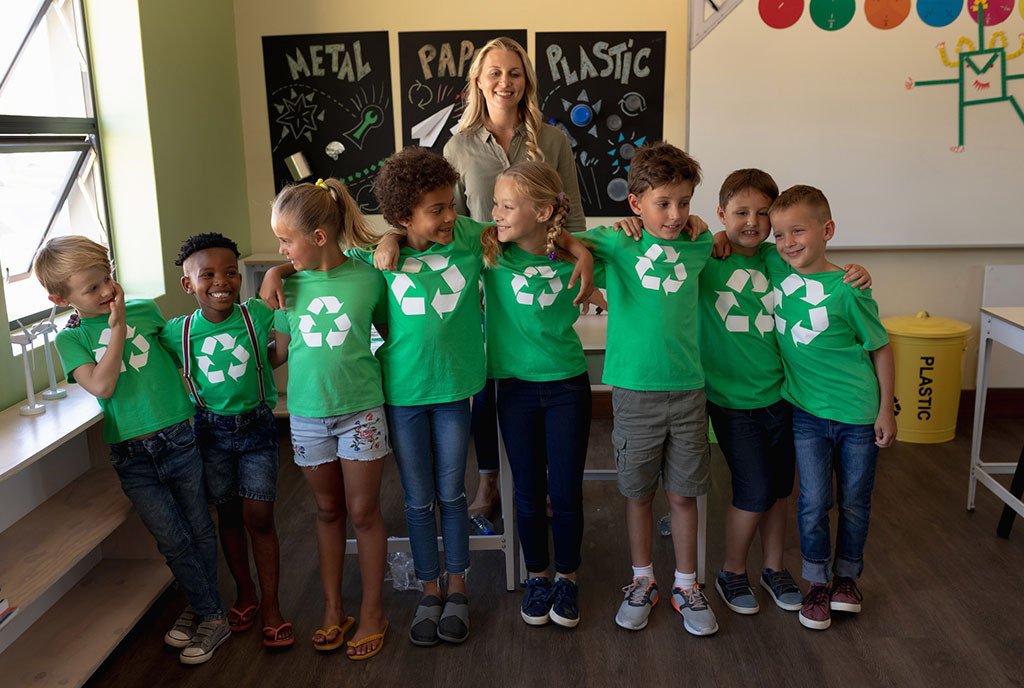
Climate change is one of the most pressing issues of our time. Educators worldwide face a monumental challenge: teaching students about the climate crisis as its impacts escalate around the world.
Many teachers lack confidence and resources to tackle this complex issue effectively. As a result, policymakers in many states are taking action to ensure climate education receives the attention it urgently deserves.
A Major Concern of Youth
Climate anxiety, stemming from looming climate change, has emerged as a significant concern affecting people of all ages. Alarming reports of rising temperatures and extreme weather events fuel this problem.
As the impact of climate change becomes increasingly visible and tangible, many people—particularly younger generations—are experiencing profound feelings of fear, helplessness, and uncertainty about the future. Generation Z is significantly affected by these feelings, with at least 84 percent of young people between the ages of 16 and 25 reporting feeling at least moderately worried about the climate crisis.
“Studies have shown that climate change is increasingly related to anxiety in young people. Findings suggest that climate change anxiety may pose a threat to mental health but also identified signs of adaptive responses, such as behavioral engagement and a sense of environmental identity,” according to Gillian Puttick, PhD, a senior researcher at TERC, a nonprofit that brings math and science educators and researchers together.
“Teaching STEM, environmental issues, and climate change is challenging for any teacher due to the vast amount of information and the speed at which it changes.”
One of the main drivers of climate anxiety is a sense of powerlessness. Despite growing awareness and advocacy efforts, the pace of action to mitigate climate change often feels inadequate compared to the scale of the crisis. The disconnect between the urgency of the issue and the slow response from policymakers and society can worsen these feelings of despair and hopelessness.
“The price of not teaching climate change and other environmental science lessons is high,” says Laurie Brennan, MBA, president of TERC. “We need more students of all ages and abilities to be enthralled with the subject and motivated to seek out professions that address and solve the havoc that climate change has on our world. Their future, and ours, depend on it.”
How Educators Feel about Teaching Climate Change
A 2023 North American Association for Environmental Education (NAAEE) survey found that 74 percent of teachers agreed climate change will have a major effect on students’ futures. They say it’s irresponsible not to address the issue and possible solutions in the classroom.
Young people already feel strongly about the climate crisis. They feel empathy and human connection when they learn about causes they’re passionate about in general. However, without appropriate training, teachers can’t get teens involved and encourage these important emotions in their students.
A significant portion of teachers feel ill-equipped to teach about climate change. Many struggle to convey the technical intricacies of climate science and its effects to their students, whether due to a lack of training, resources, or assurance in their knowledge. In fact, nearly 60 percent of polled teachers felt unconfident and unprepared to weave climate change lessons into their core classes. This poses a serious obstacle to building an informed generation capable of addressing the challenges of the climate crisis.
While many teachers recognize the importance of addressing the critical climate issue in the classroom, this lack of confidence affects their ability to do so effectively. According to Brennan, “Teaching STEM, environmental issues, and climate change is challenging for any teacher due to the vast amount of information and the speed at which it changes.”
These feelings of inadequacy often stem from limited resources and training in climate-related topics or concerns about potential pushback from parents or administrators. The politicization of climate science in some contexts may create additional challenges as teachers balance presenting factual information with avoiding controversy, which could potentially anger parents or lawmakers—or endanger their jobs.
“[TERC] also recognizes that climate change is considered a divisive topic in today’s society,” Brennan says, “so creating a curriculum that provides teachers with highly vetted research and information takes a worry off their already overloaded plates.”
For some educators, teaching about climate change can also evoke personal feelings of anxiety. The vast scope and implications of the climate crisis can feel overwhelming, leading to a sense of powerlessness among educators themselves.
Sign up for our free newsletters
Subscribe to NPQ's newsletters to have our top stories delivered directly to your inbox.
By signing up, you agree to our privacy policy and terms of use, and to receive messages from NPQ and our partners.
Policy Actions
“States looking into climate change technology and ingenuity need to think about how to shape their education systems to prepare for the new workforce.”
Despite these obstacles, many educators are committed to addressing the issue in their classrooms, seeking support and guidance to enhance their teaching practices.
Several levels of policy actions are intended to help in this regard. The 2022 Inflation Reduction Act (IRA) has made the largest investment in energy and climate in US history. Subsequent levels of policy include individual state strategies and sustainability efforts.
Several US states have developed policies to support educators in addressing the critical topic of the climate in the classroom. One significant initiative is incorporating climate change into educational standards and curricula at the state level. New Jersey and Connecticut are the only states requiring educators to teach climate change by law.
In response to the necessary training many teachers lack to teach climate change confidently, four states have passed legislation investing millions of dollars to ensure they adequately prepare K–12 teachers. California, New Jersey, Maine, and Washington are improving climate literacy through these laws.
New York has followed Connecticut by considering introducing similar laws that will introduce climate education and support teacher training. Climate science will be taught across various subjects, ensuring students receive comprehensive instruction on climate change causes, impacts, and solutions from an early age. The state also aims to prepare students for careers in clean energy industries.
According to Andrés Henríquez, director of STEM Education Strategy at the global nonprofit the Education Development Center (EDC), “States looking into climate change technology and ingenuity need to think about how to shape their education systems to prepare for the new workforce. Given the demand, we need to do this quickly.”
What Are Other Countries Doing?
Some countries are ahead of the curve in teaching climate change. In 2019, Italy became the first country to require climate education in schools. The education system has dedicated almost one hour weekly to teaching about climate change and its implications.
“We need more people who are educated on this topic.”
Research shows that nations with the lowest carbon emissions are more likely to take steps to implement climate studies in education systems. Cambodia, the Dominican Republic, Argentina, and Columbia plan to incorporate climate education into schools.
On the other hand, the top 20 carbon emitting countries don’t even mention climate change education in the Nationally Determined Contributions (NDCs) as part of their commitment to the Paris Agreement’s goals.
Preparing the Next Generation
While teachers may lack confidence in their ability to teach about climate change, some policymakers are taking steps to support them in this important task. By integrating climate change into educational standards, providing professional development opportunities, and investing in academic resources, they can ensure it becomes a focus in classrooms nationwide.
A researcher on science, educational technology, and career pathways for the next generation in the green and blue economies, EDC’s Henríquez underscores the urgency of policy conversations about climate education—and more than conversation: action for youth climate education.
“We need more people who are educated on this topic,” he says. “The demand is outstripping the supply side by two to one. The supply side needs to respond.”









